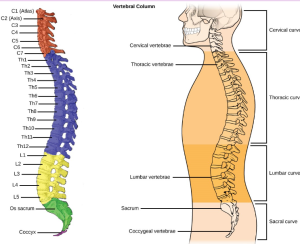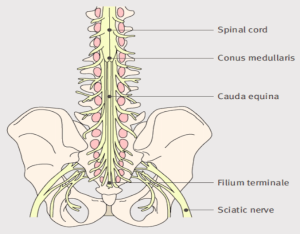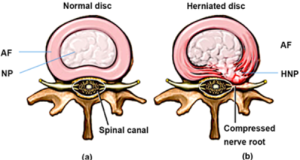29 February 2024
Stephen Winn a solicitor in the Clinical Negligence Department looks at Spinal Surgery:
Spinal surgery is usually only recommended as a last resort when all other treatment options have failed to alleviate any pain or discomfort. Non-surgical treatment options may include physiotherapy, pain relief, injections, or nerve stimulation.
If conservative treatment has failed to help, then surgery may be the next recommended option. It is useful to have a brief overview of the spine itself.
The spine and spinal cord
The spine is made up of segments of bone, called vertebrae, which are stacked on top of each other to form the spinal column. In between each vertebra are protective circular pads of tissue called discs. The discs act as a cushion between the vertebrae during movement and activities such as walking and running.
The spinal canal runs through the centre of the spinal column. It contains and protects the spinal cord and nerves. Depending which level of the spinal column you are referring to depends on which nerves come out of the vertebrae and what they control.

If spinal surgery is required, then the three main procedures are:
- Laminectomy – where a section of bone is removed from one of your vertebrae to relieve pressure on the affected nerve.
- Discectomy – where a section of a damaged disc is removed.
- Spinal fusion – where 2 or more vertebrae are joined together with a bone graft or cage.
Spinal surgery aims to improve symptoms such as persistent pain and numbness caused by pressure on the nerves in the spine. It may also be necessary to treat:
- Spinal stenosis
- Cauda equina syndrome
- A slipped disc and sciatica
- Spinal injuries
- Metastatic spinal cord compression
Spinal stenosis
Spinal stenosis is a condition where the space around the spinal cord narrows, compressing a section of nerve tissue.
The main symptoms of spinal stenosis are pain, numbness, weakness, and a tingling sensation in one or both legs. This can make walking difficult and painful.
Most cases of spinal stenosis occur in older people. As you get older, the bones and tissues that make up the spine can become worn down, which can lead to a narrowing of the spinal column.
Cauda equina syndrome
Cauda equina syndrome (CES) is a rare and severe type of spinal stenosis where all of the nerves in the lower back suddenly become severely compressed. It is a medical emergency and must be considered immediately by a medical professional.
Symptoms of CES may include:
- Sciatica on both sides
- Severe weakness or numbness in both legs that is getting worse
- Numbness around or under your genitals, or around your anus
- Problems passing urine or opening your bowels
CES requires emergency hospital admission and may require emergency surgery, because the longer it goes untreated, the greater the chance it will lead to permanent paralysis and incontinence.

Slipped disc and sciatica
A slipped or herniated disc is where the tough coating of a disc in your spine tears, causing the jelly-like filling in the centre to spill out. The torn disc can then press on the surrounding nerves causing pain.
This pain may be accompanied by tingling, pins and needles, numbness, or weakness in certain areas, for example your legs. The pain is often referred to as sciatica and is sometimes worse when straining, coughing, or sneezing. This is because the sciatic nerve travels from the lower spine down both legs.
The most common characteristic of sciatica is pain that radiates out from the lower back, down the buttocks and into 1 or both legs, right down to the calf. The pain can range from mild to severe. Sciatica on both sides can be a sign of cauda equina syndrome, which is a medical emergency.
A slipped disc can occur at any age. If a disc becomes damaged, it sometimes only takes an awkward twist or turn, a minor injury or even a sneeze to cause the filling in the centre of the disc to spill out.
However, the exact cause of a slipped disc is often unknown.

Spinal injury
Injury to your spine such as a dislocation or fracture, or the swelling of tissue, can put pressure on your spinal cord or nerves.
The injury may have been caused by several reasons such as a fall, an accident, or an assault.
Metastatic spinal cord compression
Cancer in one part of the body sometimes spreads into the spine and presses on the spinal cord. This is known as metastatic spinal cord compression.
For people in good health to withstand surgery, metastatic spinal cord compression may be treated with surgery. However, if the problems only become apparent late on, many people are too ill to withstand or benefit from surgery.
Spinal tumours
Abnormal growths and tumours can form along the spine. Growing tumours may compress your spinal cord and nerve roots, causing pain.
Benefits of Surgery
There is good evidence that spinal surgery can be an effective treatment for people with severe pain caused by compressed nerves.
Many people who have surgery can experience a significant improvement in pain or mobility. However, there is always a balance to be met by weighing the risks and benefits with the outcome, and making sure the patient is fully aware of the risks to make an informed decision.
Risks of surgery
Like all types of surgery, spinal surgery also carries risks of complications. They may include:
- Infection
- Blood clots developing for example a deep vein thrombosis (DVT) or pulmonary embolism (PE)
- Damage to the spinal nerves or cord which could result in continuing symptoms, numbness, or weakness in your legs, or in rare cases some degree of paralysis
Reasons things can go wrong
The main reason people may have a claim relating to spinal surgery is usually because of the following reasons:
- Failure to exhaust conservative treatment before opting for surgery
- Lack of informed consent about the risks and benefits of surgical and non-surgical treatment options
- Problems at the time of the surgery such as nerve injury or bleeding
- Management of an infection after surgery
- Delayed diagnosis of and treatment for CES
If you have experienced any of these problems, please contact us and we can provide further information and advice.
Any spinal injury can be life changing. If the injury was caused by the fault of someone else, then you may be able to claim compensation. This will try in some way to put you back to a position before the incident. However, we cannot turn back time but can claim compensation to assist with any needs now and in the future that have been caused by the injury.
If you or a family member has suffered a spinal cord injury because of medical negligence, we at True solicitors can help get the compensation you deserve




